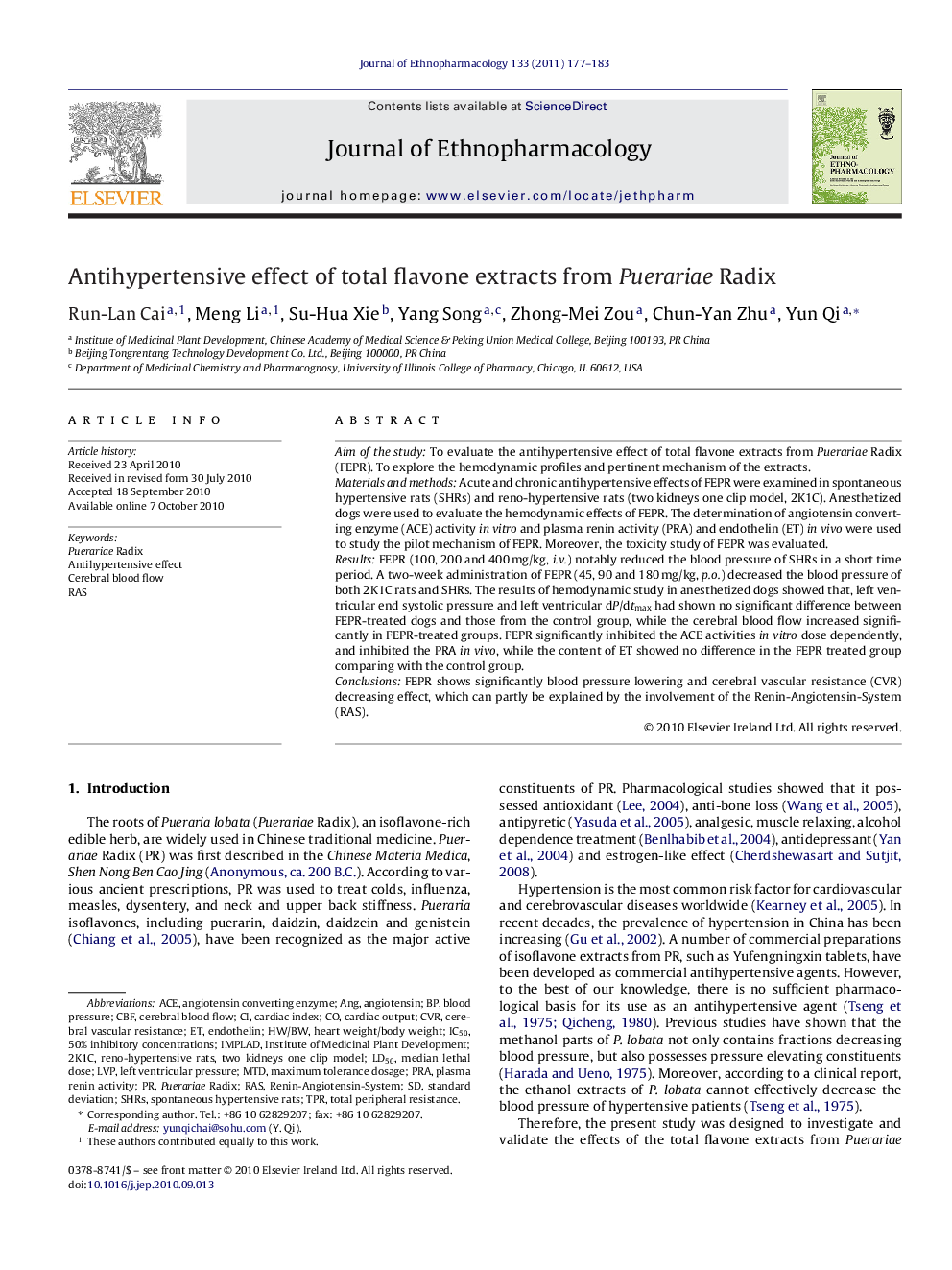| Article ID | Journal | Published Year | Pages | File Type |
|---|---|---|---|---|
| 2546050 | Journal of Ethnopharmacology | 2011 | 7 Pages |
Aim of the studyTo evaluate the antihypertensive effect of total flavone extracts from Puerariae Radix (FEPR). To explore the hemodynamic profiles and pertinent mechanism of the extracts.Materials and methodsAcute and chronic antihypertensive effects of FEPR were examined in spontaneous hypertensive rats (SHRs) and reno-hypertensive rats (two kidneys one clip model, 2K1C). Anesthetized dogs were used to evaluate the hemodynamic effects of FEPR. The determination of angiotensin converting enzyme (ACE) activity in vitro and plasma renin activity (PRA) and endothelin (ET) in vivo were used to study the pilot mechanism of FEPR. Moreover, the toxicity study of FEPR was evaluated.ResultsFEPR (100, 200 and 400 mg/kg, i.v.) notably reduced the blood pressure of SHRs in a short time period. A two-week administration of FEPR (45, 90 and 180 mg/kg, p.o.) decreased the blood pressure of both 2K1C rats and SHRs. The results of hemodynamic study in anesthetized dogs showed that, left ventricular end systolic pressure and left ventricular dP/dtmax had shown no significant difference between FEPR-treated dogs and those from the control group, while the cerebral blood flow increased significantly in FEPR-treated groups. FEPR significantly inhibited the ACE activities in vitro dose dependently, and inhibited the PRA in vivo, while the content of ET showed no difference in the FEPR treated group comparing with the control group.ConclusionsFEPR shows significantly blood pressure lowering and cerebral vascular resistance (CVR) decreasing effect, which can partly be explained by the involvement of the Renin-Angiotensin-System (RAS).
Graphical abstractFigure optionsDownload full-size imageDownload as PowerPoint slide
